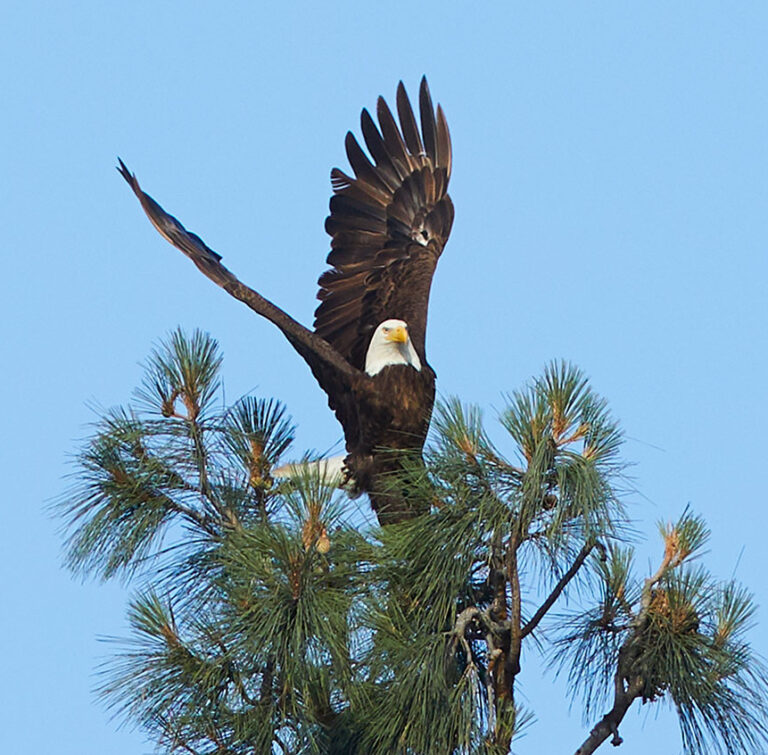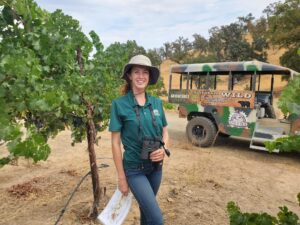
Halfway between two lively California counties, Los Angeles to the south and San Francisco to the north, lies one with a far more relaxed pace: San Luis Obispo County. The area boasts an agreeable climate, stunning topography and myriads of natural attractions.
These natural features are more than meets the eye. They are the foundation for the county’s successful economy in agriculture. The region relies heavily upon the land and its abundance of livestock, nursery products, fruit and nut trees, and vegetable crops.
But the farms in this area are not closed systems. Growers use practices that extend beyond their cultivated lands and into the larger ecosystems that encapsulate them.
The soil in which agriculturalists plant their crops; ground water and neighboring water bodies; and native wildlife, plants and insects are all factors that not only influence the farm but are impacted by decisions made on the farm.
Responsible land stewards consider the big picture when making management decisions. When managed sustainably, the native biological activity of an agricultural site contributes to a healthier agricultural system.

The sustainably farmed winegrape vineyards of San Luis Obispo County are teeming with examples of stewards putting conservation practices to work. One such vineyard is located at the southern border of the Santa Margarita Ranch AVA.
Since the region is known for wine, it may be surprising to learn there is only one vineyard in the Santa Margarita Ranch sub-appellation: Ancient Peaks Winery’s estate Margarita Vineyard.
While Franciscan missionaries planted the first grapes on the ranch in the late 1700s, Robert Mondavi planted the present-day Margarita Vineyard in 1999. Today, the vineyard’s management company alongside Founding Winemaker Mike Sinor continue to work with the land and have achieved a 15-year history of SIP Certified® sustainable certification for environmentally and socially responsible practices.
Rooted for Good
California’s native habitats are significant but often overlooked carbon sinks (Center for Biological Diversity 2023). But carbon sequestration is just one of the many positive impacts native plant life has for a farm.
Soil erosion and fertility issues have long plagued agriculturalists across the world. Beyond being a complication for farm operations, poor soil health wreaks havoc on water quality. Cultivated soils are often treated with supplemental nutrients, but when soil structure is lacking, these lands are prone to erosion. The water runoff that ensues contains soil particles, bacteria and excess nutrients that pose a threat to water quality (NRCD 2019).
Margarita Vineyard uses plants to remedy these issues. In the beginning, the team experimented with planting cover crops, but now they prefer to let native grasses flourish between the rows of vines. These grasses thrive in the ranch’s conditions, and their strong roots hold soil in place and prevent it from washing away. The native cover crops also create a diversity of beneficial soil microbes and nutrients beneath the surface to further improve soil structure and quality. Altogether, the vineyard’s structured, fertile soils stall water’s flow and act as a filter that prevents sediment and excess nutrients from leaching into groundwater.
“There’s one spot near the vineyard we call Turtle Pond,” said Sinor, who has been instrumental in building the winery’s success and continuing Mondavi’s meticulous sustainable vineyard practices. “There are definitely a lot of turtles there, and frogs, too. Around Block 32, you can see the pond and watch the turtles hanging out.”
When Mondavi planted Margarita Vineyard, he wanted to take extra precautions to protect the property’s waterbodies. He took the California Conservation Corps’ prescribed riparian setback distance and doubled it.
Much like the native grasses between their vines, the plant communities that exist in these riparian areas intercept water as it runs away from the vineyard and prevent sediment and excess nutrients from entering the waterbodies. The extra distance gives the water more time to be filtered by roots as it moves underground, further ensuring waters are protected.

Roaming the Ranch
Living in tandem with the critters in Margarita Ranch’s Turtle Pond are 41 mammal and 16 reptile species. Black bears, deer, wild boar, turkeys and bobcats are just a few of the wild animals that roam the rugged land. Even though Margarita Vineyard is only a small fraction of the ranch, these wild animals still call the cultivated land home and need to travel through and around it.
To ensure the ranch’s inhabitants can access resources throughout the property, Mondavi fenced Margarita Vineyard in separate sections. To further assist their furry friends with easy passage, Sinor explained, “The fences are ‘leaky fences.’ They aren’t very tall and have clear space down below to allow animals to migrate and get past them pretty easily.”
Non-permeable fences block access to resources and pose a serious injury risk for animals that attempt to get through, over or below them. The leaky fences and strategic sectioning at Margarita Vineyard allow the ranch’s wildlife to move safely through the property while keeping the grapes protected from heavy animal traffic.
Nature’s Helpers
While Margarita Vineyard’s team takes great pride in protecting wildlife on the property, they must control certain wild animals to maintain the vineyard’s health.
Vertebrate pests like ground squirrels can severely injure or outright kill grapevines. To protect their vines, Margarita Vineyard’s team decided to make the area less hospitable to these pests by attracting natural predators. 80 owl boxes and 16 raptor perches encourage these birds of prey to hang out and scout the area for their next meal.
But birds aren’t the only predatory animals that help control pests at Margarita Vineyard. Wild cats (not just the ranch’s big cats like mountain lions and bobcats, but wild domestic cats) also share in the rodent patrol.
“The cats on the property really help to cut down the rodent and squirrel populations,” Sinor said. This may at first seem problematic since feral cats are extremely territorial, but this works out at the ranch because it’s spacious and the cats have plenty of room to spread out. Plus, there are many barns on the property to provide shelter and act as a home base for the colonies.
“Each of our barns has its own population,” he said.

Experience the Splendor
To share their appreciation for their habitat, Margarita Ranch welcomes visitors to the ranch to explore and learn more about their natural wonders. Margarita Adventures offers various educational tours with their dedicated naturalist, Jaquelin Redinger.
Redinger guides eager tourists through the ranch to explore the ecosystems, plants and wildlife; scout for majestic eagles; forage for native plants; and even create personal photography collections. Scenic eBike tours invite guests to learn about the ranch’s history as part of California’s iconic Mission Trail and dig deeper into the native wildlife and sustainable winegrowing practices that help protect the ranch’s habitat.
Redinger shares her skills and knowledge about the nature around the ranch with the whole Margarita Vineyard and Ancient Peaks Winery team. “She has shown us how our eagle population has increased in the past few years and how to make salads and herbal tea from plants foraged from the ranch,” Sinor said.
Environmental stewardship is what most people think about when they hear the word ‘sustainability.’ Social responsibility is an equally significant component, and San Luis Obispo County’s sustainable winegrowers have big ways of showing their care. In the next Sustainable Story, learn how a boutique winery in Paso Robles uses their success to support people and animals in need.











